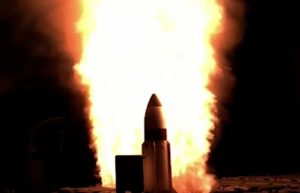 (Image Source: Missile Defense Agency - FTM-16 E2a Flight Test)
(Image Source: Missile Defense Agency - FTM-16 E2a Flight Test)
By Tom Z. Collina, Daryl G. Kimball, and Greg Thielmann
Today, Defense Secretary Chuck Hagel announced adjustments to U.S. missile defense plans designed to counter a potential limited attack involving a small number of unsophisticated long-range ballistic missiles that could, at some point in the future, be developed by states such as North Korea and Iran.
The Obama administration's decision to cancel the fourth phase of its missile defense plans in Europe is a prudent move given that the technology involving the Standard Missile 3-IIB is not ripe and given the fact that the Iranian long-range missile threat has yet to materialize. Phase four of the European Phased Adaptive Approach (EPAA) is a system that may not work against a threat that does not yet exist.
As explained in detail in an article in Foreign Policy, the decision on phase four should reduce Russian concerns about the impact of these deployments on their sophisticated nuclear-tipped ICBMs and facilitate Russian support for further, reciprocal reductions in still bloated U.S. and Russian nuclear arsenals, which would benefit U.S. and global security.
The Pentagon's plan to deploy 14 more ground-based strategic interceptors at Fort Greely in Alaska would add a very modest, mostly symbolic response to North Korean nuclear and missile saber-rattling. The 30 ground-based strategic interceptors already in Alaska and California are, at best, only useful to counter a simple, limited ballistic missile attack from North Korea or Iran. When they were deployed in 2004, they were not ready for prime time. Today, it remains unclear whether these ground-based interceptors can work effectively and they should be subjected to much more rigorous field-testing before taxpayer resources are spent on a system that is ineffective.
As missile expert Michael Elleman writes in this month's issue of Arms Control Today, North Korea still has a long way to go before it can credibly threaten the United States with nuclear weapons. It is likely to be years away from fielding an ICBM, which could deliver a nuclear warhead to the U.S. mainland. There is still time to halt and reverse current trends before North Korea's nuclear capabilities become more substantial.
